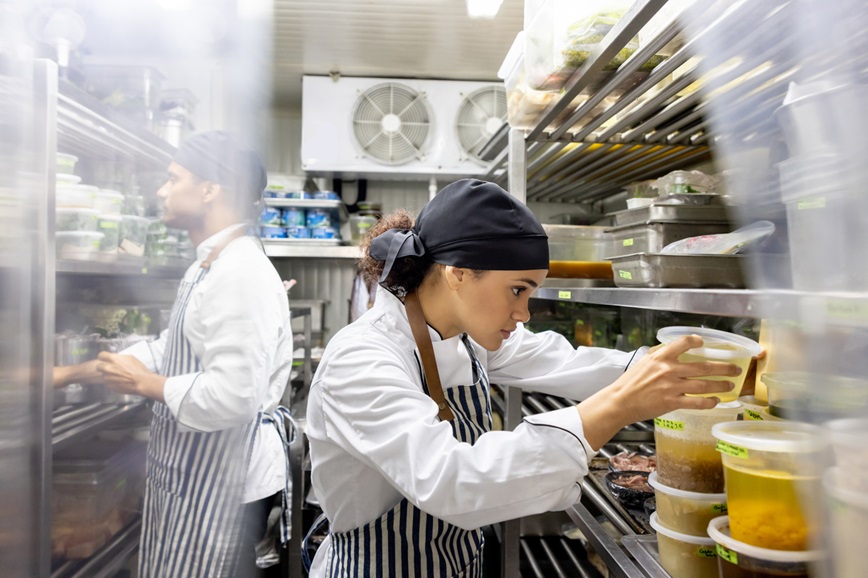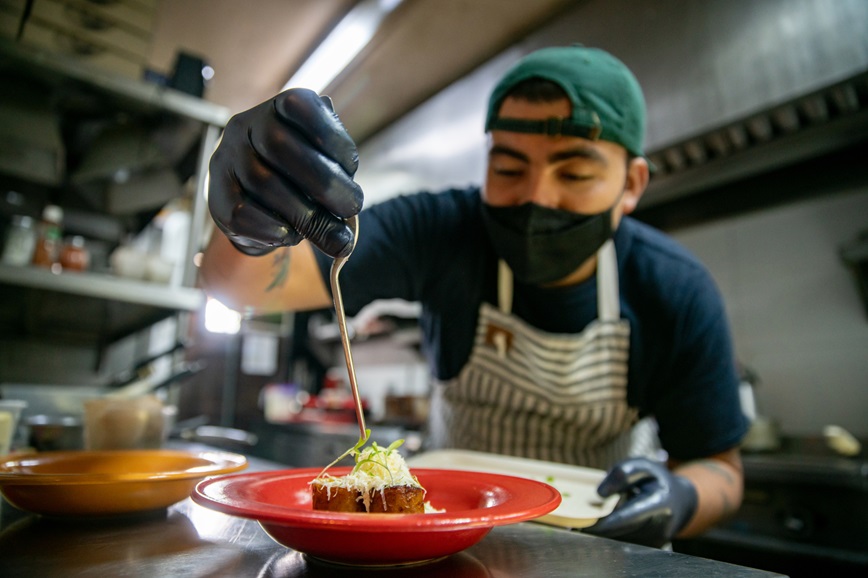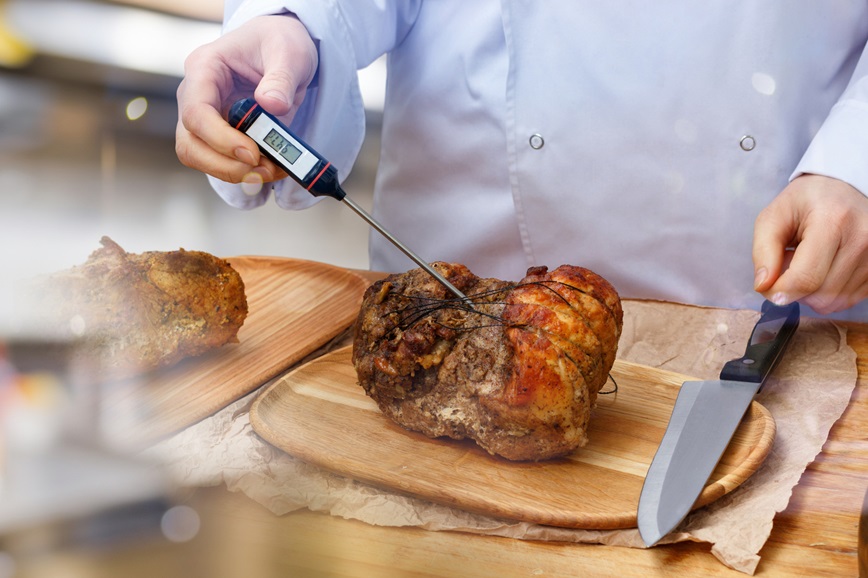We explain what managers need to know about safe food temperatures and menu consumer advisory.
Food temperatures
Overview

Cold holding

Inspectors
- Use thermometers to check cold time/temperature control for safety (TCS) foods are always stored in mechanical refrigeration at 41°F or below.
Effective managers
- Routinely use calibrated thermometers to make sure cold food is held at 41°F or below
- Make sure cold TCS foods are held within mechanical refrigeration.
Train staff:
- How to monitor cold holding temperatures of foods using calibrated thermometers
- What to do if TCS foods are found above 41°F
Make sure staff are:
- Monitoring cold holding temperatures
- Making effective corrective actions when needed
Hot holding
Inspectors
- Use thermometers to check hot TCS foods are held at 135°F or higher.
Effective managers
- Routinely use calibrated thermometers to make sure hot food is held at 135°F or higher.
Train staff:
- How to monitor hot holding temperatures of foods using calibrated thermometers.
- What to do if TCS foods are found below 135°F.
Make sure staff are:
- Monitoring hot holding temperatures
- Making effective corrective actions when needed

Cooling
Inspectors
Observe cooling being done at the time of inspection to make sure foods are being cooled:
- From 135°F to 70°F within 2 hours, and
- To 41°F within a total of 6 hours
Discuss and evaluate:
- How foods are cooled
- Equipment used to cool foods
Effective managers
- Make sure effective methods are used to rapidly cool food
- Have enough equipment to support the cooling methods used
Teach staff:
- How to use effective cooling methods
- How to monitor time and temperature when cooling foods
- Corrective actions if food being cooled does not meet time and temperature parameters
Make sure staff are:
- Monitoring cooling methods
- Making effective corrective actions when needed.
Cooking

Inspectors
- Take temperatures of foods that are cooking or have just been cooked using a calibrated thermometer
- Check knowledge of staff by asking what temperature they cook food to
Effective managers
- Know required cooking temperatures
Train staff:
- On required cooking temperatures
- What to do if required cooking temperatures are not met
Make sure staff are:
- Monitoring cooking temperatures
- Making effective corrective actions when needed.
Reheating
Inspectors
Observe reheating being done at the time of inspection to make sure foods are being reheated.
If food has been:
- Previously cooled, then reheat from 41°F to 165°F within two hours
- Commercially manufactured, then reheat from 41°F to 135°F within two hours
Discuss and evaluate:
- Reheating methods
- Equipment used to reheat foods
Effective managers
- Make sure reheating methods rapidly reheat food
- Have enough equipment to support reheating methods used
Teach staff how to:
- Use effective reheating methods
- Monitor time and temperature
- Take corrective action for food not being reheated fast enough
Make sure staff are:
- Monitoring reheating temperatures
- Making effective corrective actions when needed
Receiving
Inspectors
Check to make sure:
- Foods are received at safe temperatures
- Foods come from an approved source
- Food packaging is intact
Effective managers
Make sure:
- Food is received at appropriate temperatures
- Food is received from an approved source
- Food is received with the packaging intact
Teach staff how to:
- Properly check-in food deliveries
- Verify food is coming from an approved source
Coach and correct when staff accept:
- Unapproved food
- Food in unsafe conditions

Consumer advisory
A consumer advisory is required on if you serve raw or undercooked animal foods. A consumer advisory has two parts:
- A consumer health statement
- Menu disclosure
Some examples of foods that require a consumer advisory are:
- Burger or egg cooked to the customers preferred temperature
- Cocktail with unpasteurized egg whites
- Steak or fish served undercooked
Inspectors
- Make sure menus have both a consumer health statement and disclosure
Effective managers
- Create a consumer health statement for in-store and online menus
- Identify and provide a disclosure for each menu item with raw or undercooked animal foods

Contact us
Environmental Health
Minneapolis Health Department
Phone
Address
Public Service Building
505 Fourth Ave. S., Room 520
Minneapolis, MN 55415

